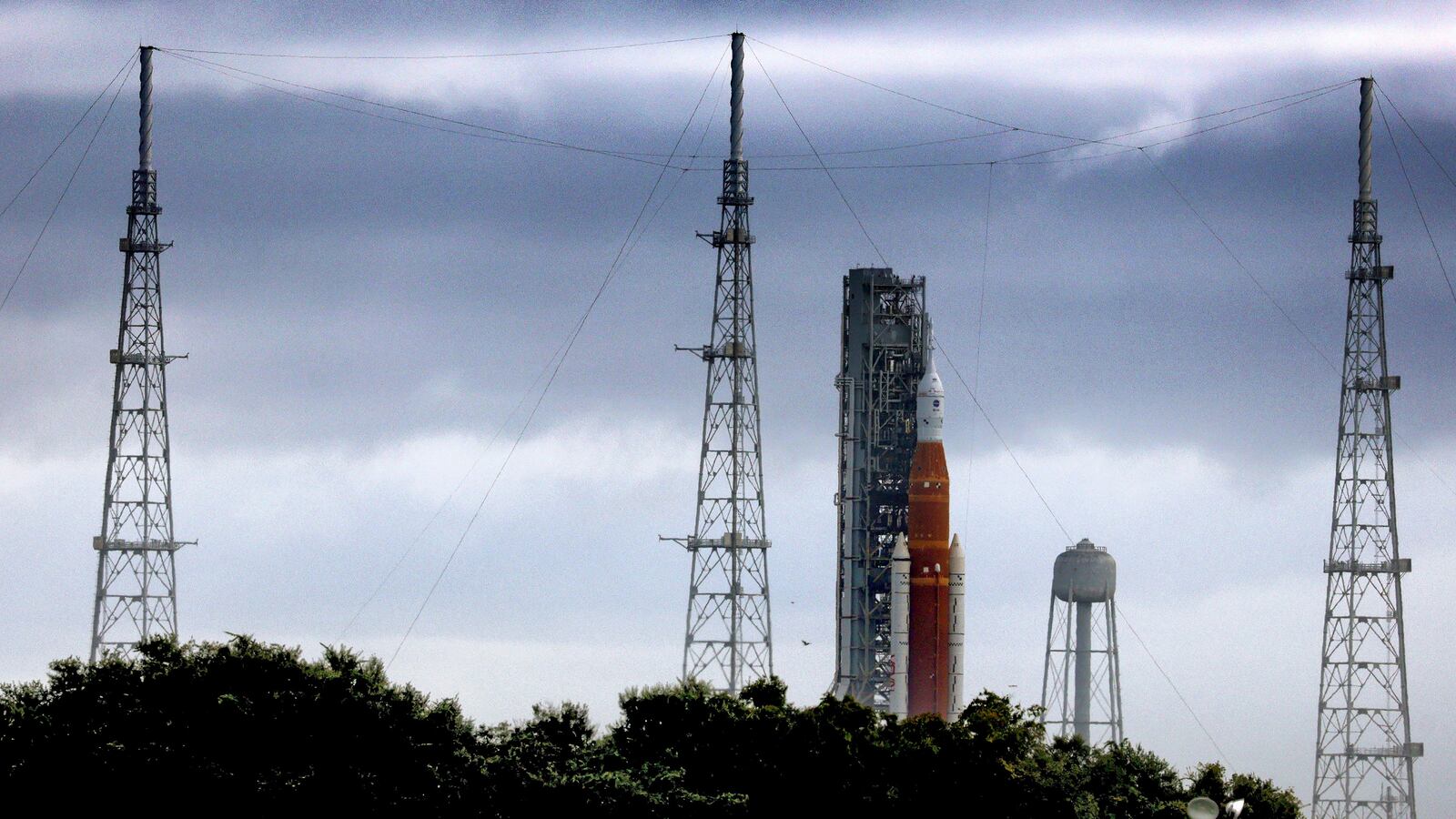KENNEDY SPACE CENTER, Florida—Throngs of anxious viewers who crowded into Florida’s space coast early Monday will have to wait until at least Friday (and possibly longer) to see NASA’s celebrated Artemis 1 moon mission get off the ground.
Originally planned to blast off within a two-hour window that opened at 8:33 a.m. local time, Artemis couldn’t catch a break. A number of problems cropped up before the launch control team decided to stand down.
At 12:40 a.m., the threat of lightning delayed fueling the gargantuan Space Launch System (SLS) rocket with 730,000 gallons of super-cold liquid hydrogen and oxygen. Launch rules do not allow loading propellant if storms are within five miles and the chance of lightning is more than 20 percent.
Then, the team struggled with what appeared to be a hydrogen leak and a possible crack on the SLS tank. Both issues were eventually resolved. Finally, sensors detected a liquid hydrogen engine “bleed,’’ in which one of the rocket’s engines wasn’t cooling at the same rate the others were. The bleed is intended to lower the temperature of all four engines so they aren’t damaged by the super-cold fuel that passes through them.
“We were unable to get a good temperature across all four engines,’’ said Derrol Nail, launch spokesman at Kennedy. The engine chill was something NASA “wanted to test” during a previous wet dress rehearsal, but had been unable to do so due to a leak in another apparatus on the rocket. “So this was the first opportunity for the team to see this live in action,” said Nail. “It’s a particularly tricky issue to get that temperature dialed in.”
Minutes after a scrub was finally announced, a massive thunderstorm enshrouded SLS and the rest of the launchpad. It seems unlikely a launch would have been able to occur under such weather conditions anyway.
Vice President Kamala Harris was originally scheduled to appear at the media center and speak about U.S. leadership in space exploration and the importance of the Artemis project. The Vice President is chair of the National Space Council.
More than 700 members of the media were credentialed to cover the launch, and many slept in their cars because most hotels in the area had been booked months earlier. Between 100,000 and 200,000 people drove to the space coast late Sunday and early Monday to view the blastoff, jamming roads when the scrub was announced. For hours, cell phone texts were unable to send because of the overloaded spectrum around Brevard County.
With its giant SLS fuel tank, twin solid rocket boosters and Orion exploration vehicle, Artemis 1 is the largest and most powerful spaceship ever built, standing 32 stories tall and capable of 5.8 million pounds of thrust. But it has never flown, and so NASA is being extra cautious about even the slightest blip.
The $4.1-billion mission is a crewless test of the Orion vehicle to orbit the moon and return home with a splashdown in the Pacific Ocean. The venture sets the stage for an eventual return of astronauts to the surface of the moon in about three years, followed by a voyage to Mars in the late 2030s. The next launch attempt is tentatively scheduled for Friday at 12:28 p.m. EDT, but NASA has yet to determine if today’s issues will be resolved in time for that date.







